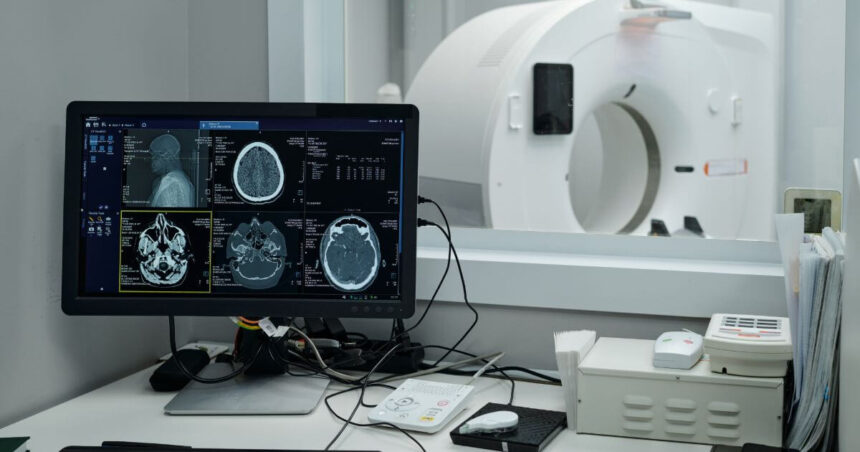CT and CTA scans are common imaging tests, but they show different parts of the body. A CT scan looks at bones, organs, and soft tissues, while a CTA scan focuses on blood vessels using a special dye. These scans help doctors determine what’s wrong inside the body and guide treatment.
I will discuss how they work, what they show, and when you might need one.
What Is a CT Scan?
A CT scan stands for Computed Tomography. It uses X-rays to take many pictures of the body from different angles. A computer then combines the images to create a clear view of the inside of your body.
What CT Scans Can Show:
- Bones and joints
- Organs like the lungs, liver, and kidneys
- Tumors and infections
- Internal bleeding
- Signs of stroke or injury
Why Doctors Order CT Scans:
- To find the cause of pain or swelling
- To check for damage after an accident
- To look for signs of cancer
- To guide biopsies and surgeries
CT scans are fast and painless, making them useful for quick diagnosis.
What Is a CTA Scan?
A CTA scan stands for Computed Tomography Angiography. It is a special kind of CT scan that focuses on blood vessels. Before the scan, a contrast dye is injected into a vein. This dye helps blood vessels show up more clearly.
What CTA Scans Can Show:
- Blocked or narrowed arteries
- Blood clots
- Aneurysms (bulges in arteries)
- Blood flow to the brain, lungs, or heart
- Problems with veins and arteries
Why Doctors Order CTA Scans:
- To check for stroke or heart disease
- To find the source of internal bleeding
- To plan for surgery on blood vessels
- To find clots in the lungs (pulmonary embolism)
CTA scans help doctors see how blood moves through the body.
CT vs. CTA: What’s the Difference?
While CT and CTA scans use the same machine and imaging technology, they serve different purposes and show different details inside the body.
A CT scan looks mainly at bones, soft tissues, and organs. It gives a general view of what’s happening inside the body. Doctors often use it to check for injuries, infections, or tumors. Sometimes, a CT scan uses contrast dye to help certain areas show up better, but not always.
A CTA scan, on the other hand, is used to look closely at blood vessels. It always uses contrast dye to make the veins and arteries easier to see. This helps doctors find blocked arteries, blood clots, or other blood flow issues.
Another difference is how long each scan takes. A regular CT scan usually takes around 10 to 15 minutes. A CTA scan takes a bit longer, around 15 to 30 minutes, because of the extra steps involved with the dye.
If your doctor wants to check your organs or bones, they may choose a CT scan. They will likely order a CTA scan if they need to look at your blood vessels.
What Happens During the Scan?
Here’s what you can expect for each scan:
CT Scan:
- You lie on a table that moves into the scanner.
- The scanner is shaped like a large donut.
- You might be asked to hold your breath.
- The scan takes 10–15 minutes.
CTA Scan:
- A nurse places an IV in your arm.
- A contrast dye is injected into your vein.
- You may feel warm or taste metal briefly.
- The scan takes about 15–30 minutes.
Neither scan is painful. Most people feel comfortable during the test.
How to Get Ready for a Scan
CT Scan Preparation:
- Avoid eating a few hours before the scan (if using contrast dye).
- Wear loose clothes or a medical gown.
- Remove any metal jewelry.
CTA Scan Preparation:
- Don’t eat or drink for 4–6 hours before the scan.
- Let your doctor know if you have kidney problems or allergies to contrast dye.
Following instructions helps ensure clear images and a smooth test.
Are CT and CTA Scans Safe?
Yes, both are safe for most people. They use a low dose of radiation, and the contrast dye in CTA scans is also safe for most patients.
Important to tell your doctor if you:
- Have kidney problems
- Are pregnant
- Have had a bad reaction to contrast dye in the past
Your doctor will take steps to reduce risks and make sure the test is safe for you.
When Are These Scans Used?
Common Uses for CT Scans:
- Head injuries or brain problems
- Chest pain or breathing issues
- Abdominal pain or swelling
- Broken bones or injuries
Common Uses for CTA Scans:
- Stroke or mini-stroke symptoms
- Chest pain or heart problems
- Blood clots in the lungs
- Aneurysms or weak blood vessels
These scans help catch serious issues early so doctors can act fast.
How Long Do Results Take?
After the scan, a radiologist looks at the images. They write a report and send it to your doctor. You’ll usually get results in a few days. Sometimes faster if the scan is urgent.
Your doctor will explain the scan and the next steps to take.
Know the Difference, Ask Questions
CT and CTA scans give doctors a detailed look inside your body. CT scans check bones and organs. CTA scans check blood vessels. Both are fast, safe, and helpful for finding health problems early.
If your doctor recommends one, don’t be afraid to ask questions. Understanding the test can help you feel more comfortable and prepared.

